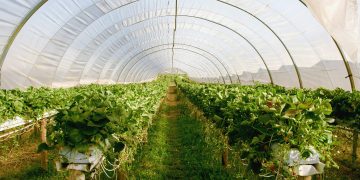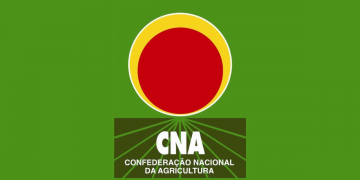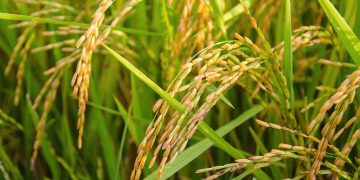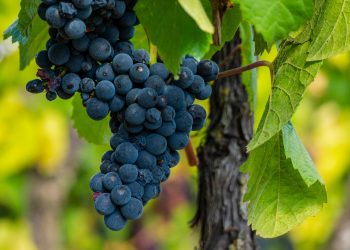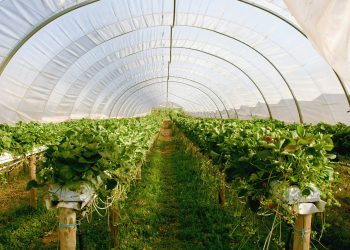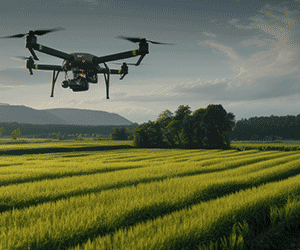Main findings of the November global overview:
- In southern Africa, there were delays in the start of the season in central and southern Angola, eastern Botswana, central Mozambique, eastern South Africa and most of Zambia and Zimbabwe. Below-average rangeland conditions are also observed in the aforementioned areas and in eastern Namibia. The Copernicus C3S multimodel seasonal rainfall forecast for December 2024 to February 2025 indicates average to above-average rainfall for most parts of the region, except for western and northern Angola, western Namibia and westernmost South Africa, where drier-than-average conditions are forecast.
- In East Africa, poor vegetation and rangeland conditions are observed and are due to rainfall deficits induced by La Niña ENSO conditions. At harvest time, crop prospects are positive for the Meher season in Ethiopia and for the long rainy season in Kenya. In war-torn Sudan, high-potential areas in Al Jazeera, Sennar and White Nile show limited crop cycle length. Vegetation conditions have improved in the eastern parts of Burundi and Rwanda after a delayed start of the A season. The need for humanitarian assistance in the region remains high, as nearly 35 million people in six IGAD member states (Djibouti, Kenya, Somalia, South Sudan, Sudan and Uganda) are in IPC phase 3 or worse.
- In West and central Africa, the main season is complete and cereal production is preliminarily forecast at 76.5 million tonnes, slightly above the 5-year average (Food and Agricultural Organization Global Information and Early Warning System, ‘Crop prospects and food situation’, November 2024). The second maize season is progressing well in the Gulf of Guinea, thanks to the average to above-average cumulative rainfall received in the last month. Pastoral conditions are generally good across the region, and good livestock production is expected. However, pasture development was below average in southern Côte d’Ivoire, north-western Nigeria and northern and southern Sierra Leone.
- In the Middle East, the sowing of winter wheat and barley is under way under average agroclimatic conditions, except in central Iran, where drier- and warmer-than-average conditions prevailed in the last month. In Yemen, the harvest of sorghum and wheat is nearing completion, with good prospects. In North Africa, the sowing of winter wheat and barley is under way in Algeria, Morocco and Tunisia under average conditions, except in western and south-east Algeria, the south-west and north-east of Morocco, and the north-west and north of Tunisia, where crop growth appears to be delayed. Drier-than-average conditions are expected to persist until the end of April 2025, according to the Copernicus C3S multimodel seasonal rainfall forecast.
- In central Asia, the sowing of winter wheat and barley was finalised under favourable conditions. In Afghanistan, the sowing of winter wheat was finalised under close-to-average moisture conditions, but drier-than-average conditions are forecast in the coming months. In South Asia, the harvesting of kharif crops is close to completion in Pakistan, with good prospects; the harvesting of aman rice has started in Bangladesh, with good prospects as well. In Sri Lanka, the planting of main-season maha rice and maize is being finalised under slightly below-average moisture conditions.
- South-East and eastern Asia. The region is no longer monitored by Anomaly Hotspots of Agricultural Production (ASAP). If specifically requested, an ad hoc analysis can be conducted for any country in the region (please contact us by email: JRC-ASAP
 ec [dot] europa [dot] eu (JRC-ASAP[at]ec[dot]europa[dot]eu)). ASAP continues to monitor only North Korea, where the sowing of winter wheat and barley was finalised under favourable moisture and temperature conditions.
ec [dot] europa [dot] eu (JRC-ASAP[at]ec[dot]europa[dot]eu)). ASAP continues to monitor only North Korea, where the sowing of winter wheat and barley was finalised under favourable moisture and temperature conditions. - South-East Asia is no longer monitored by ASAP. If specifically requested, an ad hoc analysis can be conducted for any country in the region (please contact us by email: JRC-ASAP
 ec [dot] europa [dot] eu (JRC-ASAP[at]ec[dot]europa[dot]eu)). ASAP continues to monitor only North Korea, where the sowing of winter wheat and barley was finalised under favourable moisture and temperature conditions.
ec [dot] europa [dot] eu (JRC-ASAP[at]ec[dot]europa[dot]eu)). ASAP continues to monitor only North Korea, where the sowing of winter wheat and barley was finalised under favourable moisture and temperature conditions. - In Latin America and the Caribbean islands, the harvesting of postrera crops has started in El Salvador and Nicaragua; however, prospects are poor in western El Salvador and southern Nicaragua. Crops are developing as usual in Bolivia, Cuba, El Salvador, Guatemala, Haiti, Honduras and Nicaragua, thanks to average rainfall in the last month. However, the planted area in Bolivia may have dropped to below average due to the higher costs of inputs, among other reasons. In Colombia and Peru, several key grain-producing departments (Tolima and Valle del Cauca in Colombia; Cajamarca and San Martín in Peru) have been affected by poor vegetation conditions.
The next assessment is scheduled for the end of January 2025.
O artigo foi publicado originalmente em JRC.



